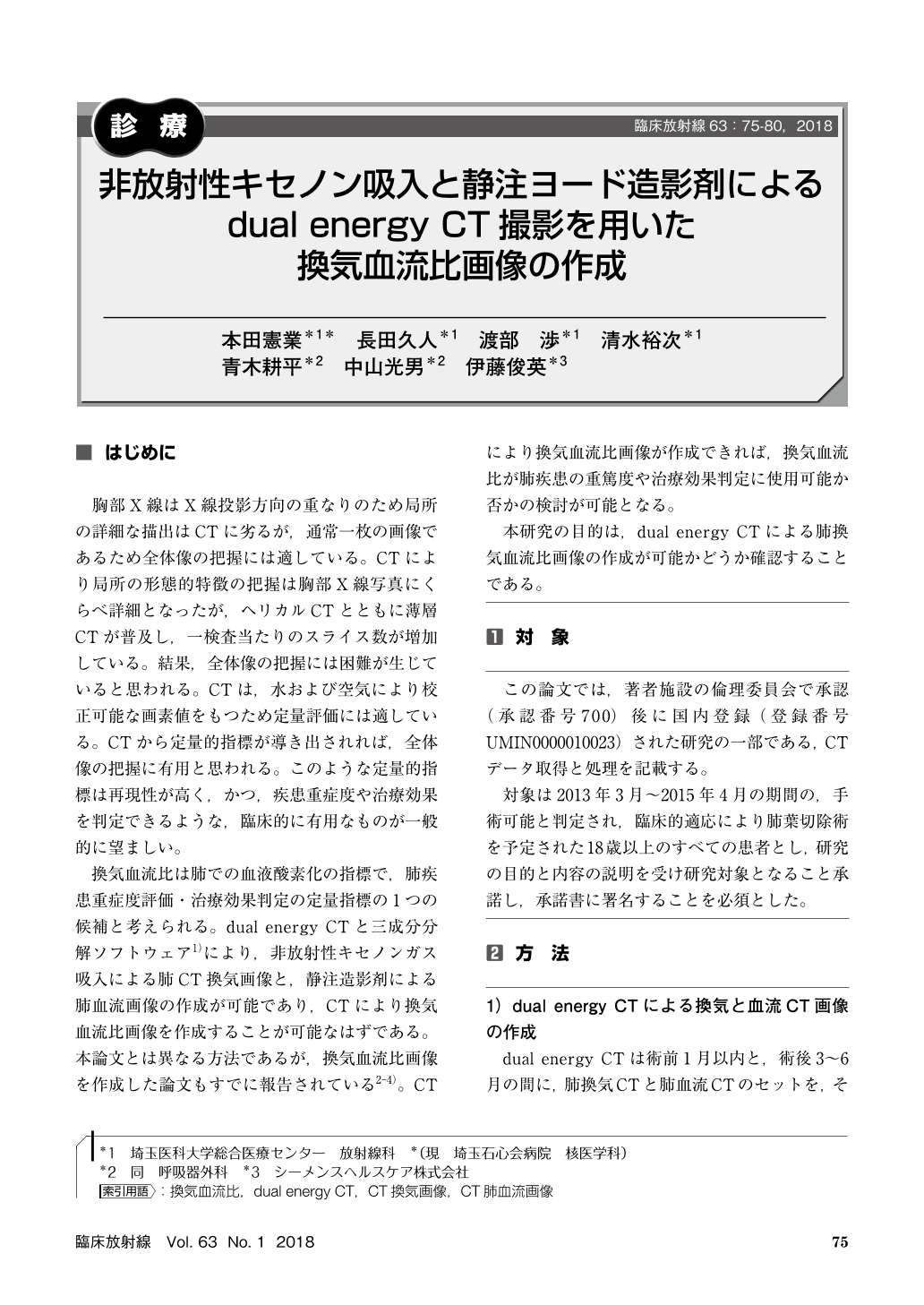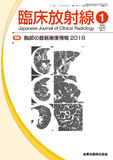Japanese
English
- 有料閲覧
- Abstract 文献概要
- 1ページ目 Look Inside
- 参考文献 Reference
胸部X線はX線投影方向の重なりのため局所の詳細な描出はCTに劣るが,通常一枚の画像であるため全体像の把握には適している。CTにより局所の形態的特徴の把握は胸部X線写真にくらべ詳細となったが,ヘリカルCTとともに薄層CTが普及し,一検査当たりのスライス数が増加している。結果,全体像の把握には困難が生じていると思われる。CTは,水および空気により校正可能な画素値をもつため定量評価には適している。CTから定量的指標が導き出されれば,全体像の把握に有用と思われる。このような定量的指標は再現性が高く,かつ,疾患重症度や治療効果を判定できるような,臨床的に有用なものが一般的に望ましい。
Purpose:Ventilation/perfusion(V/Q)ratio represents efficiency of pulmonary blood oxygenation. The purpose of the study was to report a method to create V/Q ratio map from dual-energy CT.
Materials and Methods:Twenty-five patients of lung caner treated with lobectomy were included. The study was approved by IRB and informed consent was obtained. The first CT of the chest after a vital-capacity inhalation of xenon-oxygen mixture in 35/65% ratio, and the second CT at individualized pulmonary artery phase were acquired consecutively both in dual-energy mode. Ventilation and perfusion CT was generated through three-material decomposition applied to each CT data before and after the lobectomy. V/Q ratio map was created by pixel-by-pixel division between the ventilation and perfusion CT images. Mean V/Q ratio, SD, mode and median was calculated. Paired t-test was applied.
Results:Median age, SD, range and male/female ratio was 67, 1.9, 51 to 86 years and 13:12. Pre- and postoperative mean, median, mode, SD and CV of the V/Q ratio maps was 0.87 and 0.89, 0.79 and 0.82, 0.70 and 0.74, 0.39 and 0.34, and 0.45 and 0.39, respectively. The difference between each pair of pre- and postoperative value was not significant in all.
Conclusion:V/Q map was successfully generated from dual-energy CT using xenon CT and perfusion CT.

Copyright © 2018, KANEHARA SHUPPAN Co.LTD. All rights reserved.


